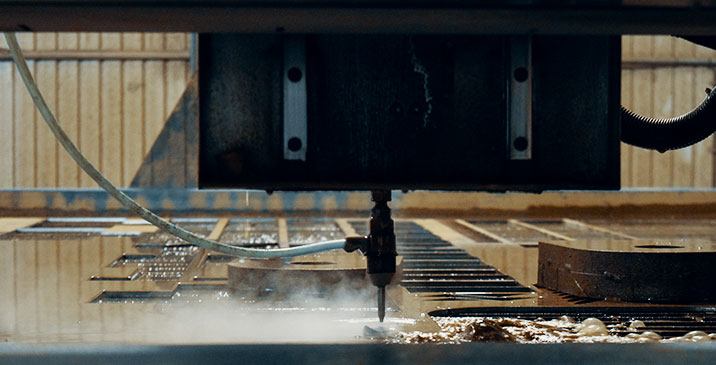Choosing the right cutting method for your specific application needs can be challenging. With a variety of options, and dramatically varying price points, making the right choice will mean carefully weighing all of the pros and cons. Waterjet cutting is an interesting CNC cutting method that works by forcing a large volume of pressurized water through a small orifice. When compared to other forms of cutting, waterjet offers some of the highest quality, most precise cuts possible. It also offers a variety of other advantages, as well as some disadvantages, when compared to other cutting methods that must be considered so that you can make the right choice for your workshop.
Waterjet cutting, as mentioned, is incredibly precise and provides a beautiful quality cut. When compared to other cutting methods almost no other method can compete. Waterjet cutting can provide a cut with no dross as well as no pierce spatter. In terms of precision, waterjet can often produce cuts in the viscinity of +/- 0.005″, with a kerf width around 0.035″. In addition, one challenge with other cutting methods is heat distortion. When a waterjet cutter is used there is no heat distortion such as melting, burning or warping because water insulates and absorbs heat which means that pristine precision is accomplished with each cut. Further, with waterjet cutting there is no mechanical stresses on the material you are cutting. With other cutting methods there may be pressure from various angles but with waterjet cutting there is no metal on metal contact and no heat created so mechanical stresses are non-existent. In addition to providing some of the best cutting possible, a waterjet table is the most flexible cutting option. This is because waterjet cutting can cut almost any material so you are not limited to metallics, plastics, fiberglass, fabric or anything else – waterjet can cut whatever material you need to cut up to a thickness of 4”. A waterjet table is typically one of the most expensive cutting methods but when you compare all of the advantages, as well as the fact that it can ultimately save you in finishing costs and time, the value can be easily seen. When comparing similar advantages and disadvantages, the closest method to waterjet is laser, but with laser there is still potential for heat distortion, mechanical stress and reduced accuracy and precision. While they may be close, in the end, waterjet is the clear winner. This is not to say that other cutting methods are not good or ideal for you but if you are looking for the highest quality cuts, the most precise and the least risk of damage to pieces during the cutting process, waterjet wins in all categories.
 English
English  Français
Français 
